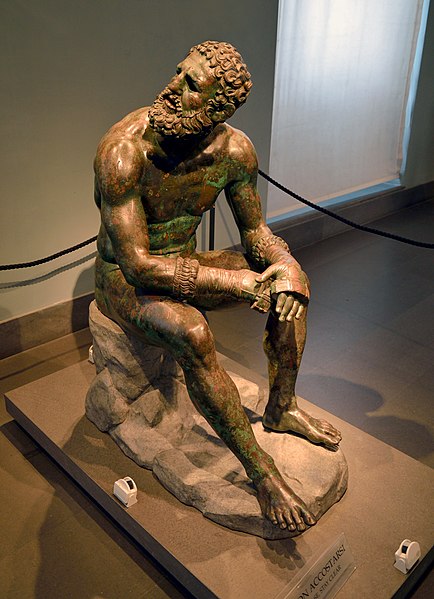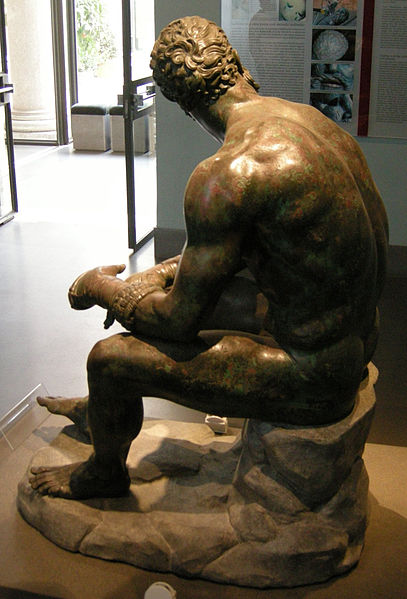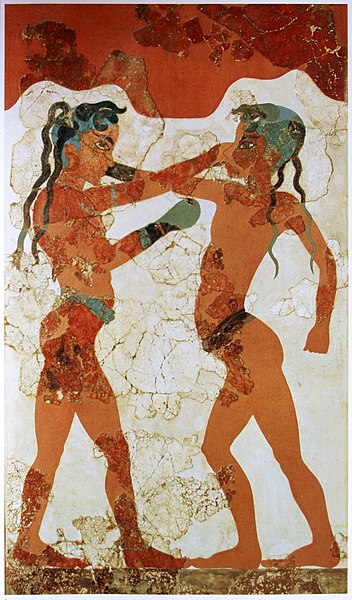The Boxer at Rest, also known as the Terme Boxer, Seated Boxer, Defeated Boxer, or Boxer of the Quirinal, is a bronze sculpture, a Hellenistic Greek original, of a sitting nude boxer at rest, still wearing his himantes, a type of leather hand-wrap. It has been given various dates within the period of about 330 to 50 BC. It was excavated in Rome in 1885, and is now in the collection of the National Museum of Rome, normally displayed in the Palazzo Massimo alle Terme.
Boxer at Rest
Boxer at Rest
View of the back of the sculpture
Experimental color reconstruction of the bronze statues from the Quirinal, Liebieghaus Polychromy Research Project (Brinkmann & Koch-Brinkmann)
Ancient Greek boxing dates back to at least the 8th century BC, and was practiced in a variety of social contexts in different Greek city-states. Most extant sources about ancient Greek boxing are fragmentary or legendary, making it difficult to reconstruct the rules, customs and history surrounding this activity in great detail. Still, it is clear that gloved boxing bouts were a significant part of ancient Greek athletic culture throughout the early classical period.
Boxer resting after contest (bronze sculpture, 300–200 BC).
Gallo-Roman boxing mosaic from the Getty Villa Collection
Minoan youths boxing (BC 1500), Akrotiri fresco. This is the earliest known evidence for the use of gloves.
Left arm from a statue of a young boxer, late 2nd BC. National Archaeological Museum, Athens








